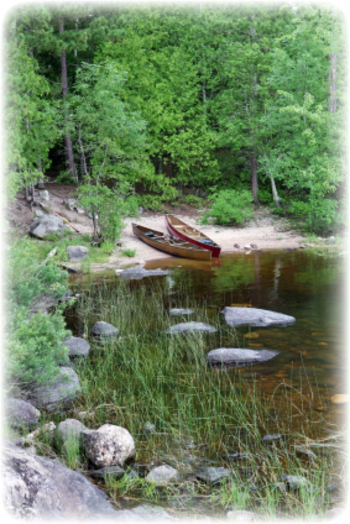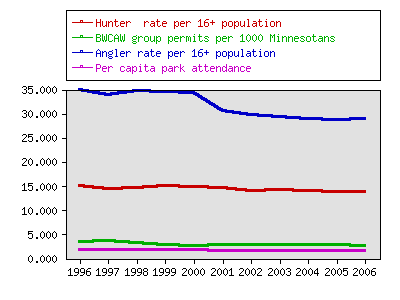Indicator 60: Outdoor Recreation


Goal: Minnesotans will have opportunities to enjoy the state's natural resources.
Rationale: Preserving the state's natural heritage is important not only for preserving plant and animal life and sustaining the state's economy, but also for recreation and enjoyment.
About this indicator: Per capita participation in outdoor recreation has declined. Minnesotans are less likely to obtain hunting and fishing licenses, visit state parks, and canoe in the BWCAW than in the past. They are also less likely to go boating.

Things to think about: Population shifts and generational changes appear to be responsible for much of the decline out outdoor recreation. Minnesota’s population is aging and becoming more urban, and older people and city dwellers participate less in traditional outdoor activities. The rapidly growing nonwhite and Latino populations also have lower participation rates.
In addition, younger generations appear to be participating less in outdoor activities than previous generations did at the same age.
Sources:
- Minnesota Department of Natural Resources, http://files.dnr.state.mn.us/aboutdnr/reports/strategic-documents/trends.pdf
- Annual values provided by Tim Kelly, DNR
Local data:




